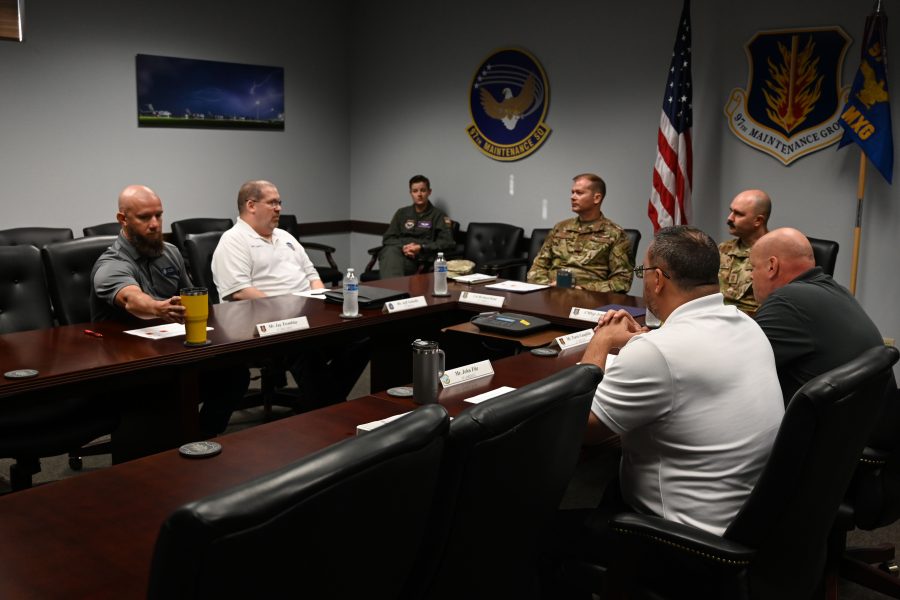The 43-day government shutdown is over for Air Force and Space Force civilian workers, but it may take time to get every employee their backpay and returned to the office, service officials advise.
President Donald Trump signed a continuing resolution late in the evening of Nov. 12 ending the longest shutdown in history. The CR, which was approved by the Senate on Nov. 10 and the House of Representatives on Nov. 12, will keep the government open through Jan. 30.
The legislation allowed all furloughed civilian workers to return to work Nov. 13, but it’s unclear how many of the 334,000 furloughed Pentagon workers were prepared to come back at the last minute—Trump did not sign the bill until past 10 p.m. on Nov. 12.
The Office of Personnel Management directed agency supervisors to remain flexible if some employees are simply unable to return to work right away, Veronica E. Hinton, associate director of Workforce Policy and Innovation at OPM, wrote in a Nov. 12 memorandum.
“For employees who face legitimate circumstances that prevent them from immediately returning to work due to the length of the lapse, agencies may consider the use of appropriate flexibilities (e.g., adjustment of work schedules or approval of personal leave at the employee’s request) consistent with agency policies and missions and operational needs,” the memo states.
The Air Force directed supervisors to set “reasonable expectations” for all Air Force civilian workers unable to return to duty right away, Gwendolyn DeFilippi, principal deputy assistance secretary of the Air Force for Manpower and Reserve Affairs, wrote in separate Nov. 12 memorandum.
“Recognizing this has been an extended shutdown period with impacts to the mission and our civilian workforce’s personal lives, leaders should recognize employees may need to secure reasonable arrangements to return to the workplace (e.g., transportation, childcare, eldercare, etc.),” DeFilippi wrote in the memo posted on the unofficial Air Force amn/nco/snco webpage.
“Commanders and directors may authorize up to eight hours of administrative leave and/or situational telework for up to one week from the date of the CR’s passage.”
The Air Force confirmed Nov. 13 that DeFilippi’s memo is authentic.
Many Airmen, Guardians, and civilians workers worried during the shutdown about how they would make their monthly car payments, rent, childcare, and other bills. The Pentagon was able to identify last-minute solutions to fund Oct. 15 and Oct. 31 paydays for most service members, but civilian employees went unpaid through the lapse in appropriations.
The question at the top of civilian workers’ minds now is when they can expect to receive their next paycheck as well as the retroactive pay they missed while on furlough.
“Restoring pay to the civilian workforce is a top priority,” DeFilippi wrote in her memo. “Restorative efforts will first prioritize pay for the upcoming pay date of 21 November 2025 and then restoration of backpay.”
But it’s still unclear when Air Force and Space Force civilian workers will receive their shutdown backpay.
Hinton wrote that OPM “is committed to ensuring that retroactive pay is provided as soon as possible” but offered no estimate of when that might occur.
The Government Employee Fair Treatment Act of 2019 states that furloughed federal workers shall receive backpay “at the earliest date possible after the lapse in appropriations ends, regardless of scheduled pay dates.”
The Air Force nor OPM respond a request for how long it took for civilian employees furloughed during the fiscal 2019 shutdown to receive backpay.
Hinton’s memo offered guidance to federal agencies for how retroactive pay relates to issues such as unemployment benefits and retirement deductions.
Agencies must check to see if any furloughed employees have received unemployment benefits within the last 52 weeks.
“If so, the agency should inform the state unemployment insurance agency of the amount and period covered by the retroactive payment,” the memo states. States will determine if an overpayment exists and sometimes require the employer “to recover such overpayment by collecting the overpayment amount from the employee.”
Retirement deductions under the Civil Service Retirement System or the Federal Employees Retirement System must be deducted from the employee’s retroactive basic pay for the lapse in appropriations, according to the memo. The employing agency must also contribute to the retirement fund its corresponding share for the retroactive payment.
So far, the Air Force has not released any other guidance to returning furloughed workers, according to a spokesperson.
Air Force Chief of Staff Gen. Kenneth Wilsbach sent following message in an email to civilian employees:
“Welcome back, you were missed!” Wilsbach wrote. “This nation expects a lot from the USAF, and we have much to accomplish. I’m proud to serve alongside you. Let’s get after it, fight’s on!”


